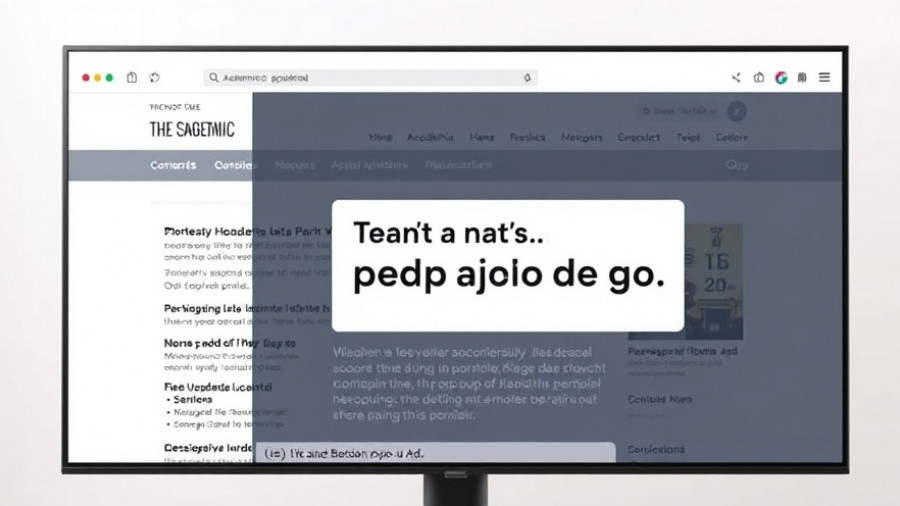
Microsoft CoPilot's Productivity Dilemma: What Does It Mean for Small Businesses?
The recent study from the UK Department for Business and Trade has illuminated the complexities behind Microsoft CoPilot's performance in enhancing workplace productivity. Despite high satisfaction ratings from users, the findings raised eyebrows about the actual efficacy of AI-driven tools.
User satisfaction with CoPilot was recorded at a commendable 74%, with 80% claiming the software's utility in day-to-day tasks. However, the productivity gains that were anticipated were notably absent. The primary issue seems to lie in the need for users to verify the outputs generated by CoPilot, effectively nullifying the time-saving potential that AI promises. This situation is reminiscent of earlier technological advancements, where initial trust issues delayed the full benefits of innovation.
The Trust Factor: Why AI-Driven Productivity Isn’t What You Think
A recurring theme in AI today is the challenge of trust. As noted in the study, while users appreciate the functionalities of tools like CoPilot, the necessity of verifying AI-generated content reveals a deeper hesitance in leaping fully into automation. The promise of AI is to not just assist, but to streamline operations efficiently. However, businesses may need to exercise patience as this technology matures. The blending of human oversight with AI capabilities could be a significant factor in determining how and when CoPilot can fulfill productivity expectations.
Exploring ChatGPT Projects: A Game-Changer for Team Collaboration?
The landscape of AI tools continues to evolve with OpenAI's introduction of ChatGPT Projects, now accessible to free users. This means that more businesses, regardless of their budgetary constraints, can now organize conversations and project materials in one coherent space. The tool acts as a virtual filing system, enabling teams to collaborate with a structured approach.
The choice to expand functionality to free users appears strategic, enticing users to experience these enhanced capabilities. For small businesses, having a centralized hub for team discussions, notes, and shared insights could markedly improve collaborative efforts, especially when managing various ongoing projects. However, initial mixed results reported by users, particularly concerning usability, indicate that further refinement will be necessary for widespread adoption.
The Bigger Picture: What These Tools Indicate About the Future
As we look at the introduction of these advanced AI solutions, it’s crucial to understand the broader implications. The ongoing discussions surrounding the productivity of Microsoft CoPilot juxtaposed with the potential organizational benefits of ChatGPT Projects reflect the ongoing evolution of workplace tools. It raises compelling questions about the nature of work and how technology will redefine our understanding of efficiency in the coming years.
Challenges Ahead: The Intersection of Technology and Human Capability
The trials and triumphs of using technologies like Microsoft CoPilot and ChatGPT showcase several challenges that businesses must navigate. While these tools aim to reduce workloads and streamline processes, they also require an adjustment period where users must learn to work alongside AI systems effectively. Ultimately, companies must not only invest in new technologies but also in training their employees to build trust and optimize systems for the best results.
Actionable Steps for Small Business Owners
The revelations surrounding Microsoft CoPilot and OpenAI's ChatGPT highlight the importance of approaching AI with a balanced mindset. Small business owners should carefully evaluate their AI investments, focusing not just on the immediate benefits but also on potential long-term applications. Embracing training opportunities for staff and implementing gradual integration strategies may yield more significant productivity advantages over time.
In conclusion, while AI technologies are reshaping the business landscape, their impact is nuanced. Engaging with these tools mindfully and proactively can set the stage for future productivity growth and innovation. As technology continues to advance, the onus will be on businesses to derive value from these innovations, striking a balance between human oversight and automated assistance.
 Add Row
Add Row  Add
Add 




Write A Comment